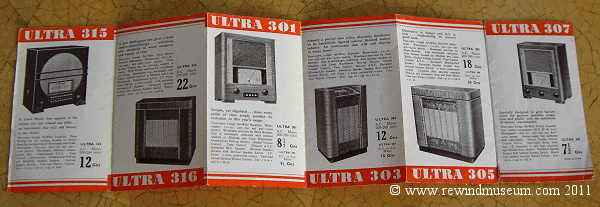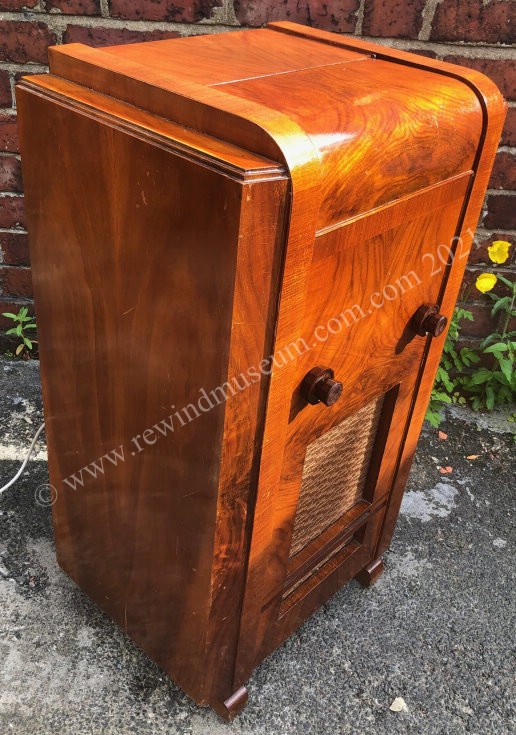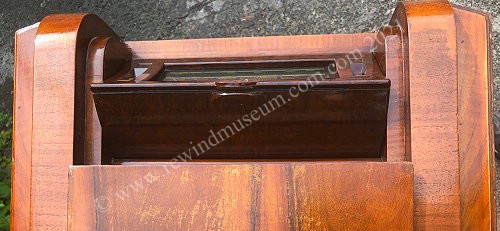Museum of early consumer electronics and 1st achievements
www.rewindmuseum.com
1937 Sparton Radio.



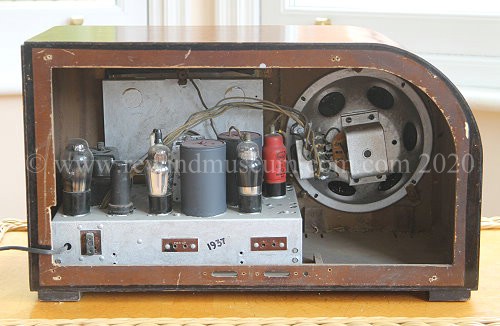




This valve (tube) radio was manufactured by Sparton in 1937. Spartaon radios featured very attractive hard wood cabinets.
Sparton Corporation started in 1900 as the "Withington" company in Jackson, Michigan, by Philip and Winthrop Withington.
The company manufactured parts for agriculture but soon moved into the manufacture of steel parts for the new motor
industry. By 1909 it was manufacturing car radiator fan parts and a couple of years later an electric car horn.
Just after the 1st World War it moved into the production of early battery powered radios with the trade name "Sparton".
Sparton continued to make radios and early televisions until 1956 when Sparton became part of "Magnavox".
Elftone Envoy transistor radio.
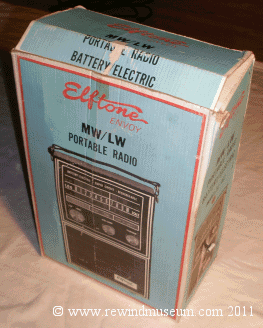


This is an early Japanese transistor radio. Owned from new. Inside the large case is a small
radio PCB. Mostly the case contains empty space. LW/MW Battery Mains. Purchaced in the 1970s.
Always kept the box for everything!
Unknown Make. Model 765B.





Unknown Manufacturer. Model No. 765B. This looks similar to models in the mid 1940s. British made.
Large attractive wooden case desktop model. Long wave, medium wave and short wave.
If anyone recognises this radio, and knows the make, please
contact us with details.
1958. Murphy radio A484.



Manufactured by Murphy Radio Ltd. Welwin Garden City UK. Contains 8 valves. Super Heterodyne, long wave,
short wave and FM, 2 loudspeakers. Table-top model. Fully working. bOriginal Price in 1958 £39.00

1960/61. Sanyo 10X-300 transistor radio.

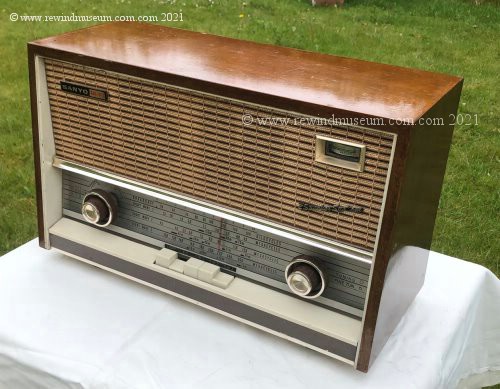



This is a very rare radio and is one of the most interesting in the collection. 240V and internal battery.
Made by Sanyo in Japan and yet it looks very like the Murphy (Made in England) valve model from 1958 above.
It has the same styling, it is in a similar wooden case (late 50s styling) and it has push button selection keys.
Sanyo started making radios in 1954. The first ever reported transistor model from Sanyo is the 8s-p3 in 1959
containing 8 transistors and in the usual Japanese style plastic portable case. There may have been others
but our research only finds this 8 transistor model. The Sanyo 10s-p10 1 from 1961 is a 10 transistor
portable plastic radio. The notation 10s-p10 relates to 10 transistors just as the 1959 model 8s-p3 had 8.
There was an after-market servicing handbook for the plastic portable 10s-p10 radio dated 1962. This
is likely to have been published a little time after that model was released. This museum desktop model 10X-300
also has 10 transistors. It seems very likely these 10 transistor models would have been manufactured 1960/61.
There is nothing on the internet which details an early 10 transistor Sanyo radio from 1960/61 in a wooden
desktop cabinet rather than plastic portable model. This may be the only one. Indeed looking at this radio,
it looks like a late 1950s valve radio (like the 1958 Murphy) in size and styling, until you pick it up and
realise how light it is. "HiFi" - "2 speaker model". To summarise - This radio is unusual because -
It looks like a valve radio but is transistorised. Built right on the transition years when valves gave way
to transistors. About the same size as a valve radio (like the Murphy) but much lighter.
Japanese radios were usually plastic portables. This is a very rare wooden desktop model. It is a very early
transistor radio. There is no information about it. It could be the only one remaining. Very rare.
In our searches for “early Japanese transistor radios” we only found one desktop model in a dark stained
wooden case made by “Crown”. It contained 8 transistors and had 4 control knobs. Most Japanese transistor
radios were plastic portables. This radio was purchased from a dealer in the UK. The last picture from
the back (very difficult to read) has been enhanced so that the text can be read more easily.

1959. Pye R33 valve radio. Plastic case.
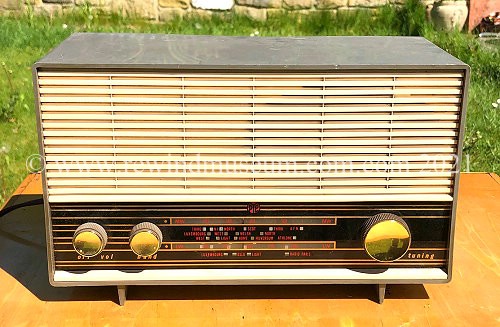

Like the Philips MK 36749 valve radio below, this radio was in a plastic case and was compact. It was lighter than many
valve radios at the time which were in wooden cases. This is not a battery portable as it is powered by mains electricity
and not batteries. 1959 was the time when smaller much lighter battery portable radios were being produced in Japan
and sold worldwide. This valve radio was soon to be considered obsolete technology.

1962/63. Philips B6X45A AM/SW Rapidosound Tropicalized Radio.






This table-top radio with push buttons is in a wooden case with an attractive high gloss finish.
It includes 7 valves and 2 loudspeakers.
Built towards the end of the "valve" era and just before the "transistor" era became mainstream.
A very attractive radio and whilst there are a small number of similar models from Philips to be found online
(Like the B6X23A, the B4X23A, and the B6X44A) all using the central push buttons and in a
similar sized case, this may be the only B6X45A. Made In Eindhoven Holland
This radio came from a family home in Hailsham, E Sussex. The home had been in the family for 100+ years until 2018.
The radio had been purchased from new. The son kindly donated the radio to the museum in 2023.

Philips MK 36749 valve radio. Plastic case.


It is likely this Philips radio was produced in 1958 / 59 as it is similar to other radios of that period
including the Pye R33 above and the Philips B2G81U from 1959
Like the Pye R33 valve radio above, this radio was in a plastic case and was compact. It was lighter than many
valve radios at the time which were in wooden cases. This is not a battery portable as it is powered by mains
electricity and not batteries. 1959 was the time when smaller much lighter battery portable radios were being
produced in Japan and sold worldwide. This valve radio was soon to be considered obsolete technology.
1946. The Bakelite Bush DAC90 valve radio.

Released July 1946. LW and MW wavebands. 5 Valves. Original cost £11 11s (about £11.55).
1950. The Bakelite KB Toaster valve radio

Looked like a toaser. KB Toaster radio. Released 1950. 5 valves. LW and MW wavebands.
Practical Wireless magazine. August 1969.

Featuring a 3 band portable radio.
Adverts from the BBC Hand Book 1929.

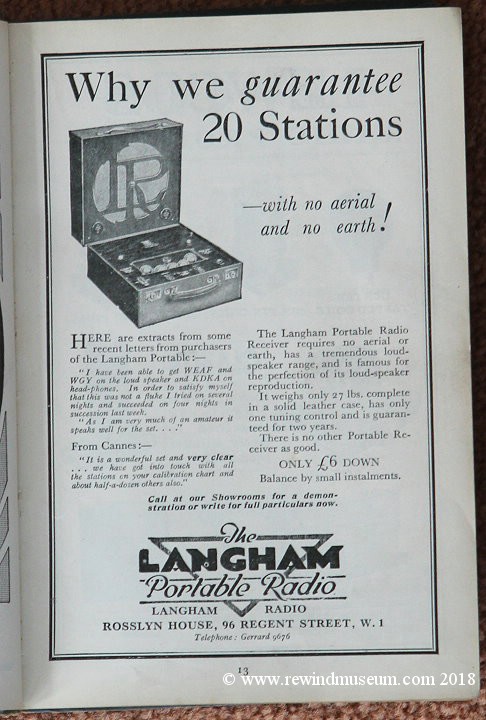
From the
BBC Hand Book 1929. There was no television in 1929 and the even the number of radio stations was limited.
One company quotes "Why we guarantee 20 stations"
Practical Wireless magazine. May 1962.
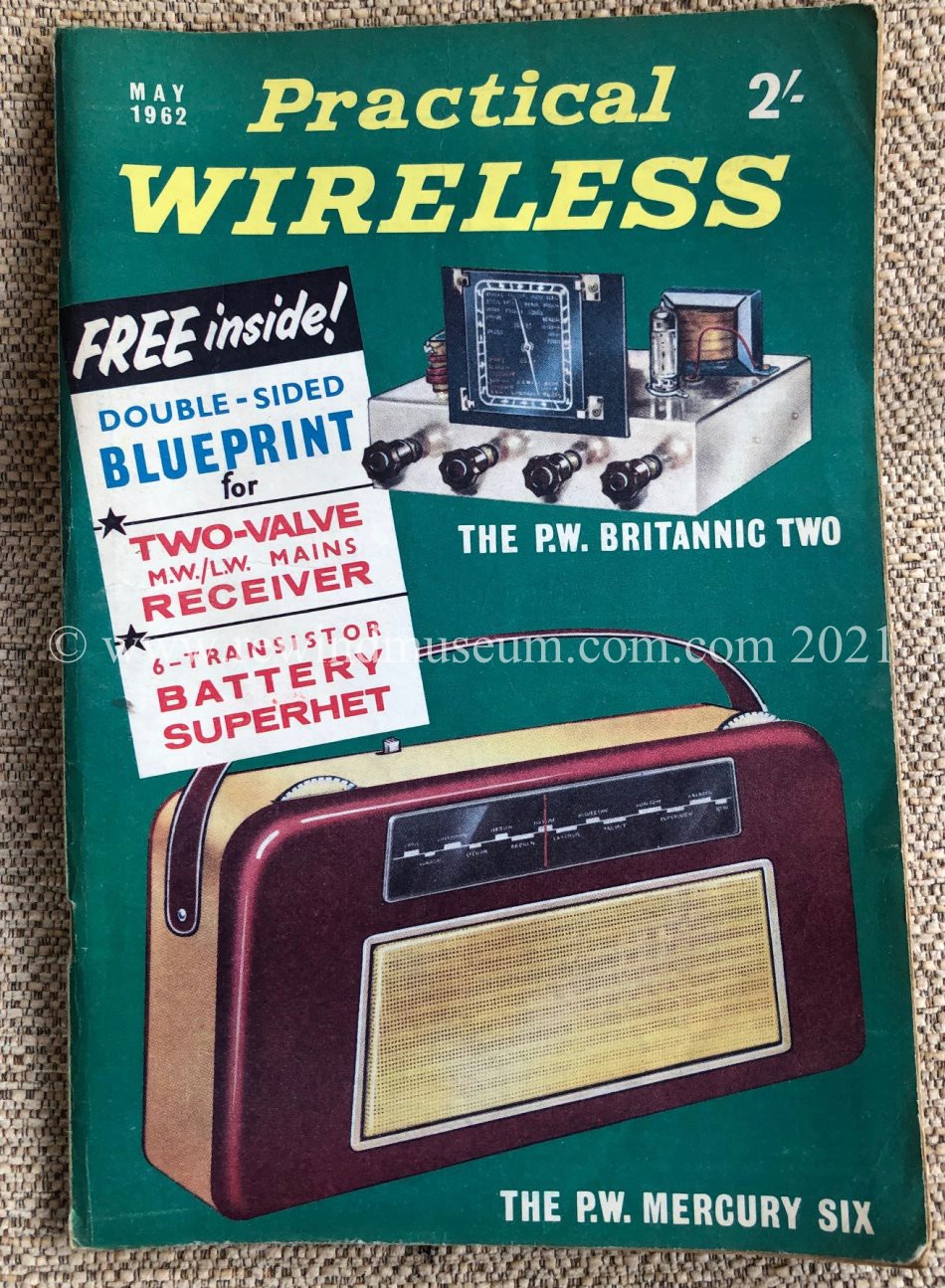
This is an interesting front cover. 1962 was a year when transistor radios were starting to
become more popular but valve radios were still available. Here we see projects for both.


Three battery portable valve radios from the 1950s.
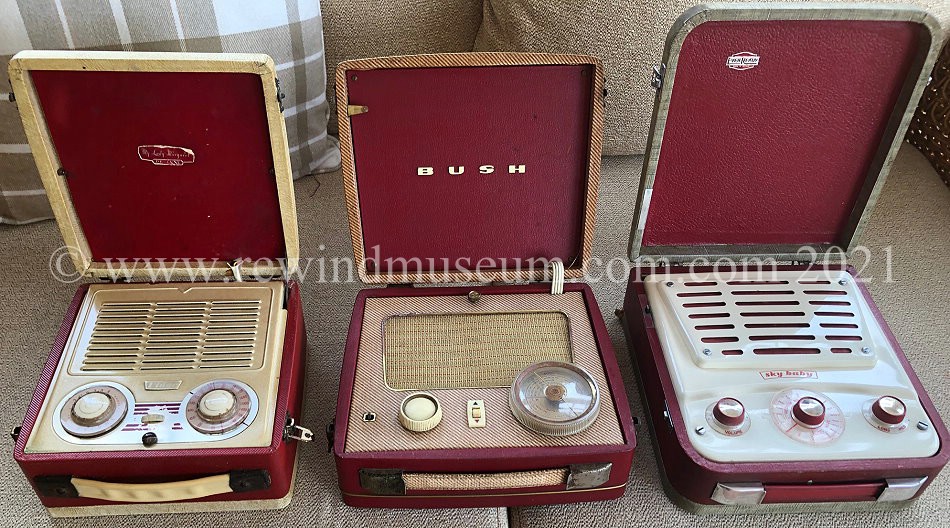 1954. Vidor "My Lady Margaret De Luxe" portable valve radio.
1954. Vidor "My Lady Margaret De Luxe" portable valve radio.

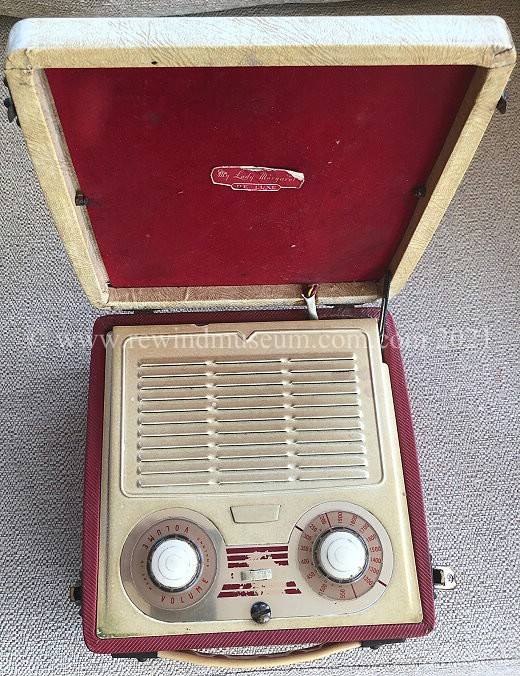


4 valves, medium wave and long wave. Covered wooden case. 8" x 8" battery portable. 2.24Kg excluding battery.
Manufactured by Vidor Ltd. Erith, Kent U.K.
1956. Ever Ready - "My Baby" portable valve radio.




4 valves, medium wave and long wave. Covered wooden case. 9" x 9.5" battery portable. 1.97Kg excluding battery.
Manufactured by Ever Ready Co Ltd. London. U.K.
1957. Bush BP51 portable valve radio.


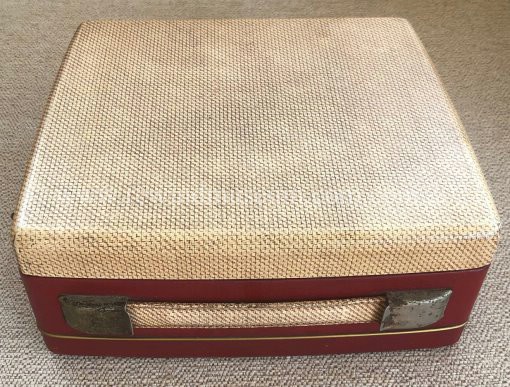

4 valves, medium wave and long wave. Covered wooden case. 9" x 9.5" battery portable. 2.06Kg excluding battery.
Manufactured by Bush Radio. London. U.K.
These three Mid 50s portable valve radios are all very similar. This was the last attempt ("last throw of the dice")
to produce a lightweight battery portable radio using valve technology. By 1959/60 plastic portable radios from
Japan took over. Desktop valve radios continued into the early 60s but not as battery portables. All three radios
have a similar style and are representative of the era and the available technology at that time.
All three radios are about the same weight at about 2Kg, the Vidor is physically smaller than the other two.
By 1959 plastic case transistor battery portable radios were a little under 1Kg.
In addition, transistor radios used much lighter, smaller batteries which lasted longer.
By 1959 plastic case transistor battery portable radios were a little under 1Kg.
In addition, transisor radios used lighter, smaller batteries which lasted much longer. Since valves
heat up they draw a lot of current and drain batteries much faster than "solid state" transistor radios.

Additional notes -
Short wave 10m - 100m
Medium wave 100m - 1000m
Long wave 1000m and upwards
We also have in the museum -
A PYE Radio Model P224
 Making a donation.
Making a donation.
The Rewind Museum is a non-profit making endeavour. The web site and the touring exhibitions are run on
a voluntary basis. Donations,
not money, just old items you no longer want, are always welcome.
If you have something that you think would be of interest, please contact us with the details.
We can send in a courier to pick them up. (Even an international courier). Thank you.
Please note - The Rewind Museum site has been archived by the British
Library so that future generations can always access the site's content.
To talk to us about making a donation please go to - "
making a donation".
Are you interested to read about a 10 year + restoration of a classic vehicle?
If so go to -
www.1952chevytruck.com
 The 1952 The 1952 Chevy truck web site.
The 1952 The 1952 Chevy truck web site.

Web site copyright © 2018 Vision International. All rights reserved.
For all questions & comments about this site's content contact Dave at Rewind Museum.




























































